Delphi
Our route leads northwards now, away from the Peloponnese peninsula to the mainland, via the Charilaos Trikoupis cable-stayed bridge that spans the west end of the Gulf of Corinth. This bridge was completed in 2004 just before the Summer Olympics in Athens. In fact the Olympic torch bearers were the first to cross it, according to our guide. A sudden squall drives rain across the windscreen as we cross over the bridge into mainland Greece and to our destination for the evening near the oracle at Delphi.
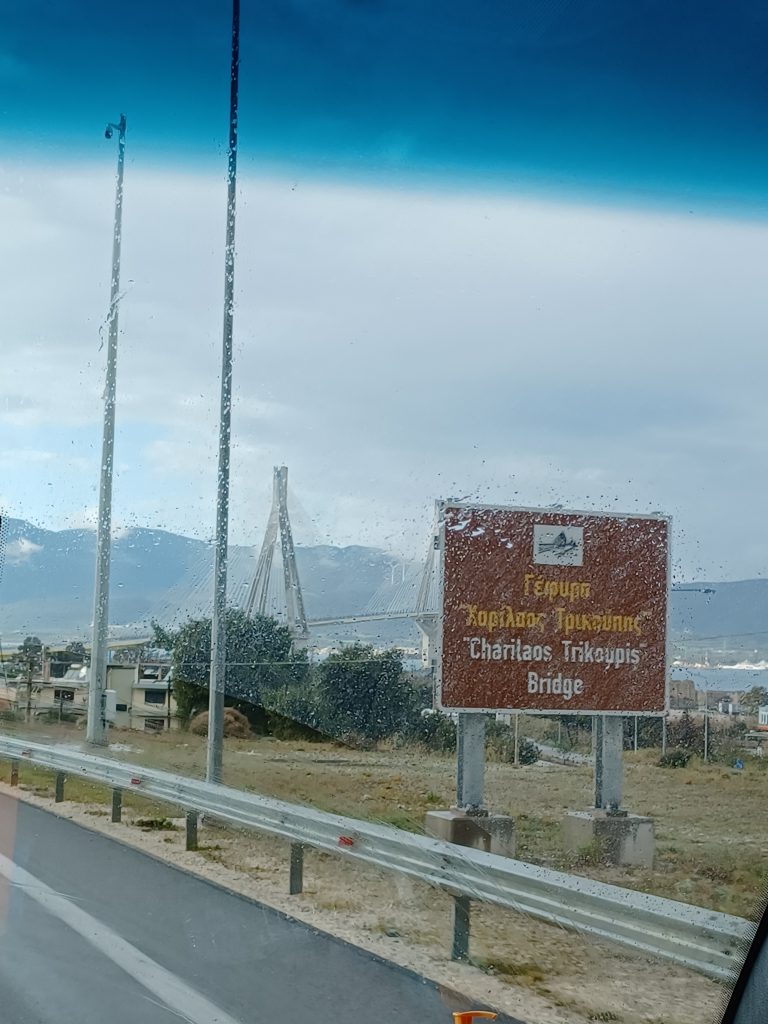
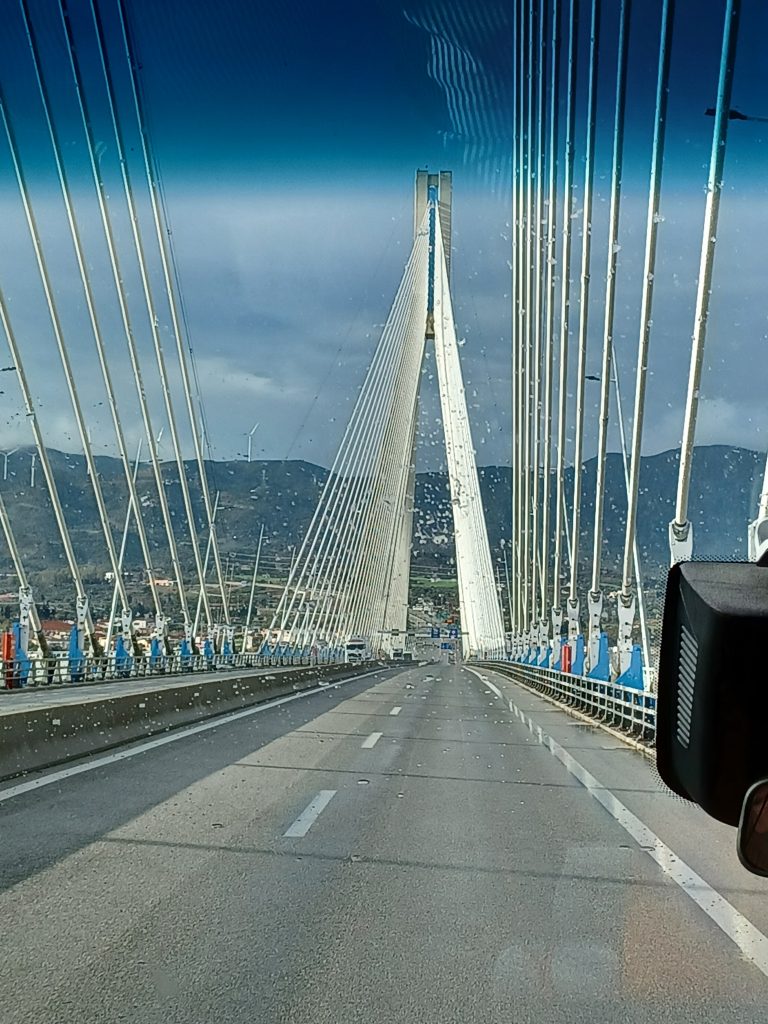
I would have liked to visit Missolonghi, close by, where the poet, Lord Byron, lived while fighting for the Greek cause against the Ottomans in 1821. He actually led troops and paid for them out of his own pocket. He is considered a hero in Greece even today and there is a statue of him in Athens. He died in Missolonghi in 1824. Anyway, we don’t visit. Not on the itinerary.
The site of the oracle at Delphi is located on a truly dramatic site on the southern slopes of Mount Parnassus on the south mainland. The site was ostensibly at the centre of the world and a conical shaped rock, known as the omphalos (navel) marks the place where it fell to the ground after Zeus threw it from the heavens.
From the road, we walk up the Sacred Way to reach the oracle, which was known as the Pythia, the name of the high priestess mediating between those who consulted her and the God, Apollo. The guide points out the space under the floor of the Temple, whence the Pythia would prophesy events. Apparently there were vapours which came out from a chasm in the rocks, putting her into some kind of a trance. “The Pythia was the most famous oracle in the Greek world” we are told. A woman of over 50 years old, she was consulted by emperors, kings, generals (all male) and many others seeking divine guidance, before every major event. One of her most well-known prophesies came when, in the sixth century BC, King Croesus of Lydia enquired of her whether he should wage war against the Persians. Upon being told that a great empire would fall he went into battle. A great empire did indeed fall, but it was his own! Other prophesies turned out to be equally ambiguous.
Ascending a little further, we stand betwixt the mostly sixth century BC ruins, and look down upon the oracle with the valley of Phocis far below us and towering crags behind. A truly spectacular site. A black redstart skitters on a stone block nearby. Not much else is moving except the clouds. A place to ponder. I gaze upon the site where great emperors, such as Hadrian, whose statue we saw at Olympia, once stood; philosophers, such as Socrates; Julius Caesar, who was warned to beware the Ides of March, Alexander the Great, and others from all over the empire. Some may have travelled for weeks to reach here.
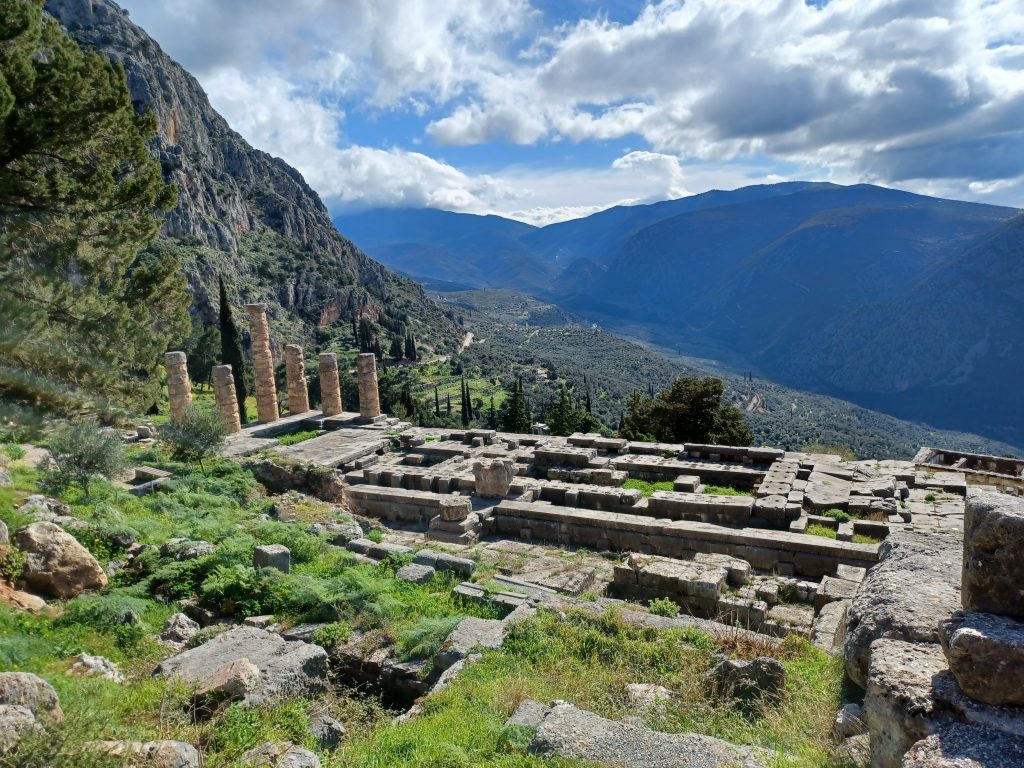
On the Sacred Way below the temple is the restored Treasury of the Athenians, dedicated to Apollo. Beautiful building made in around 500 BC of marble with Doric capitals and metopes, funded from the spoils from the Battle of Marathon. “This is where votive offerings to the Gods were housed. These offerings contributed to Delphi’s wealth”, we are told. Two of these were the larger than life statues of the Twins of Argos, now housed in the nearby Delphi Archaeological Museum.
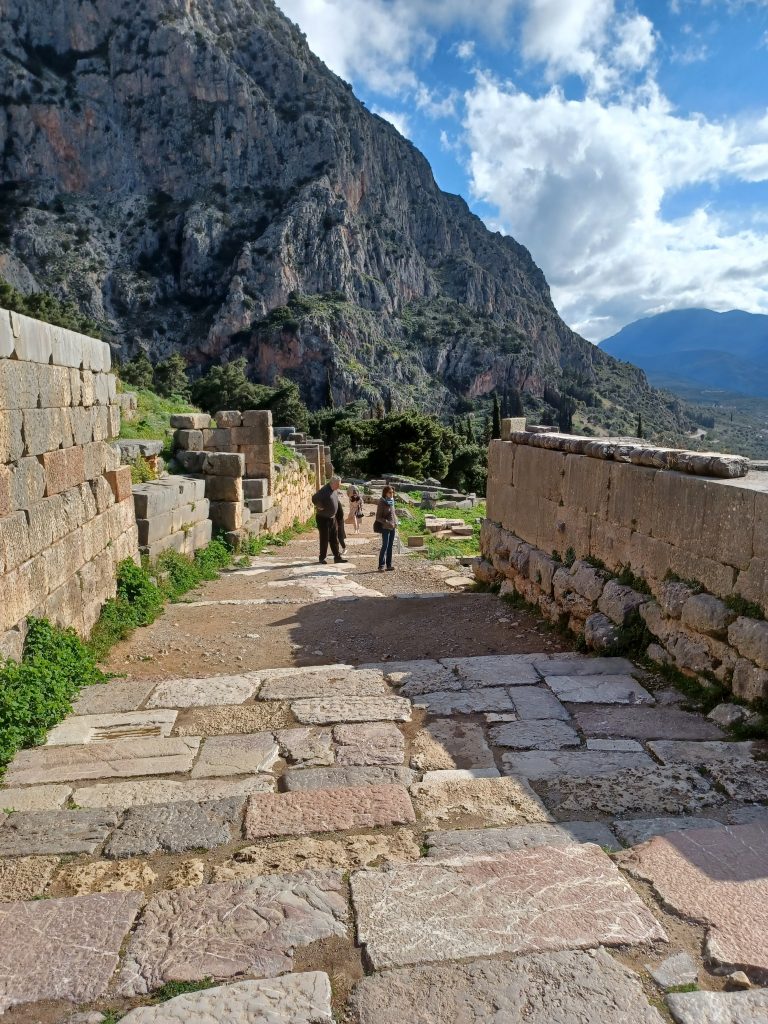
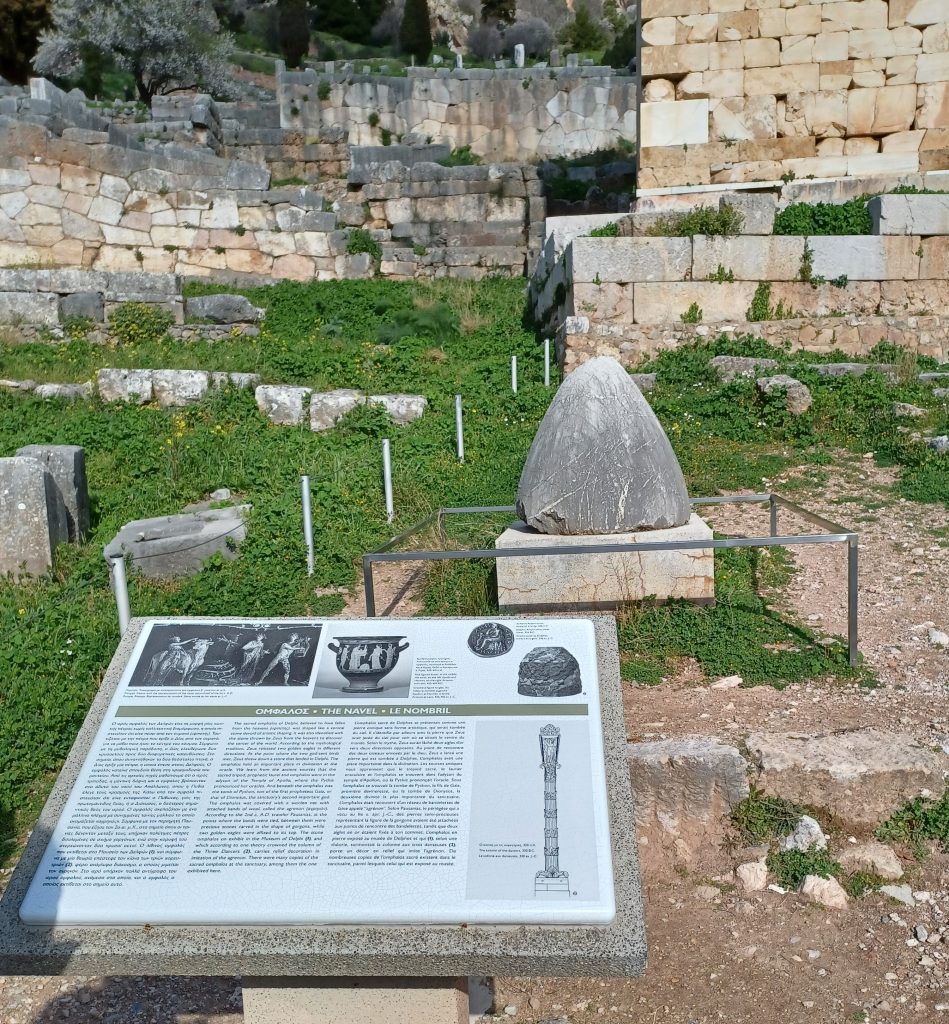
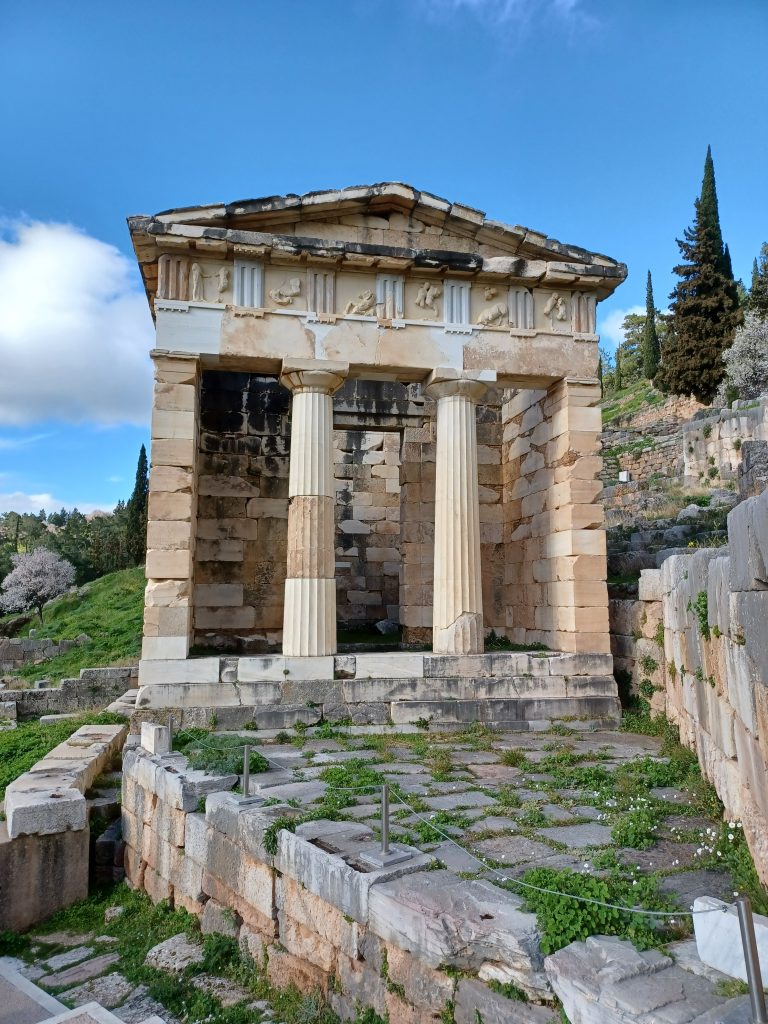
We head thither. As well as these twins are many other artefacts and statuary from the site. These include the bronze statue of the Charioteer of Delphi, excavated in the late 1800s and found in the Temple of Apollo, and the Sphinx of Naxos, which would have perched upon an Ionic column next to the Temple.
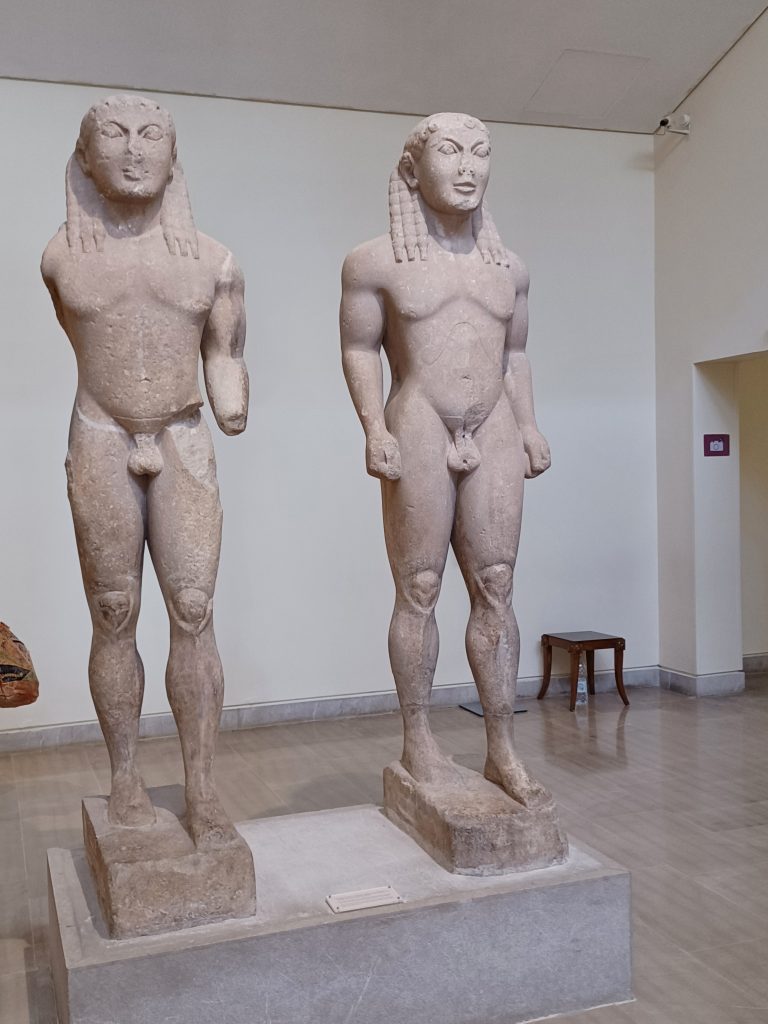
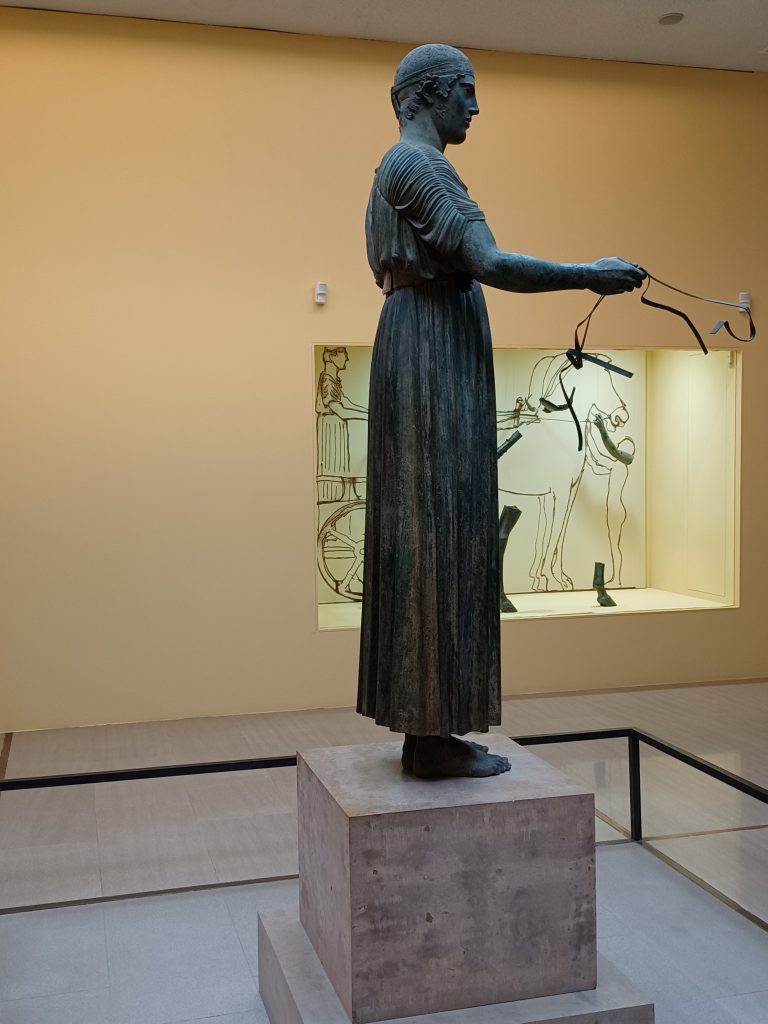
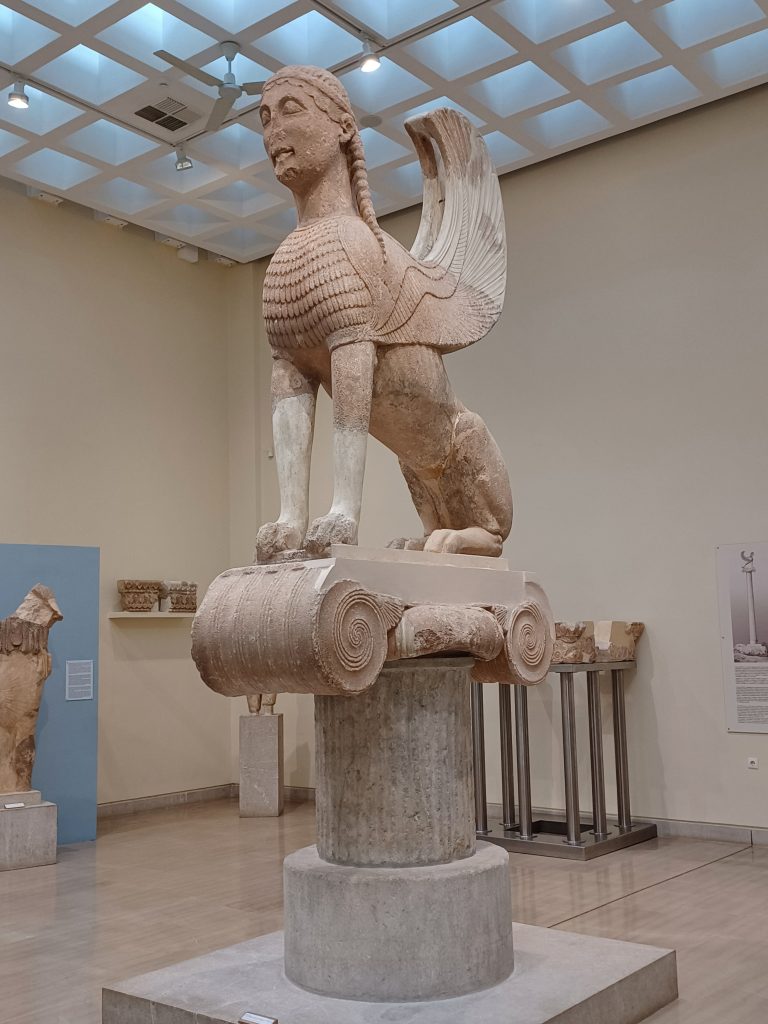
As in all major Greek sites, there is a also Greek theatre here as well as a stadium. The games at Delphi were known as the Pythian games, the precursor of the Olympics in fact. They took place every four years. Similar but not as important as those games in Olympia became, they were dedicated to Apollo, while at Olympia they were dedicated to Zeus. The stadium is closed off today.
The Temple of Apollo was destroyed in 390 AD by the Roman Emperor Theodosius I, he who established the Creed of the Council of Nicaea (325) as the Orthodox doctrine in the Roman Empire in 381 (See The Balkans Part 3), in his zest to destroy pagan sites. Thus, the onetime centre of the world, famous for centuries, was left to lie in ruins.
Meteora
The final destination of our tour is Meteora, a UNESCO heritage site, which consists of a number of Eastern Orthodox monasteries atop soaring sheer spiky rocky outcrops. We see them from the bus as we drive along the plains of Thessaly into the village of Kalambaka. The first monks arrived here in the early eleventh century, we are informed. Over time 24 monasteries were established. There are now six of them and we visit three. The bus is able to drive part way up to the top of one hill, for which I am grateful, after which we ascend a steep flight of steps. There are several bridges leading to the monastery entrances across gaps with sheer drops below. Not recommended for those with vertigo. These bridges and steps have been erected in fairly recent years to enable the thousands of tourists and Orthodox pilgrims to visit. In the early days, the monks and nuns were hauled up the precipitous pinnacles in nets or climbed ladders and ropes. Good job they had such faith.
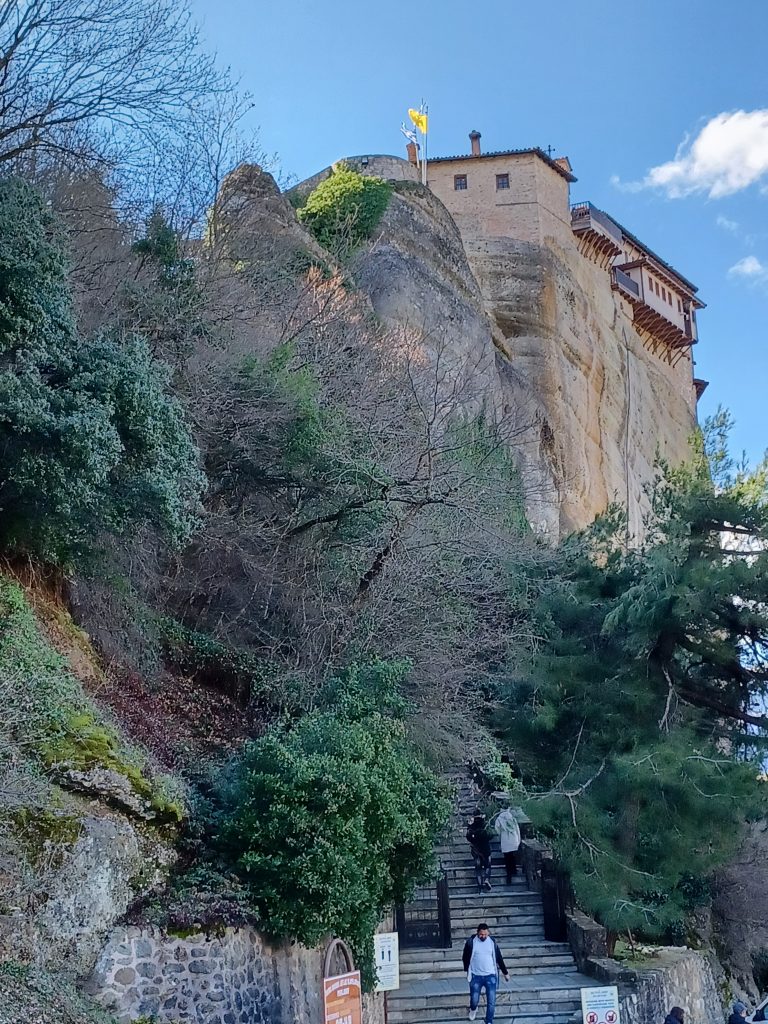
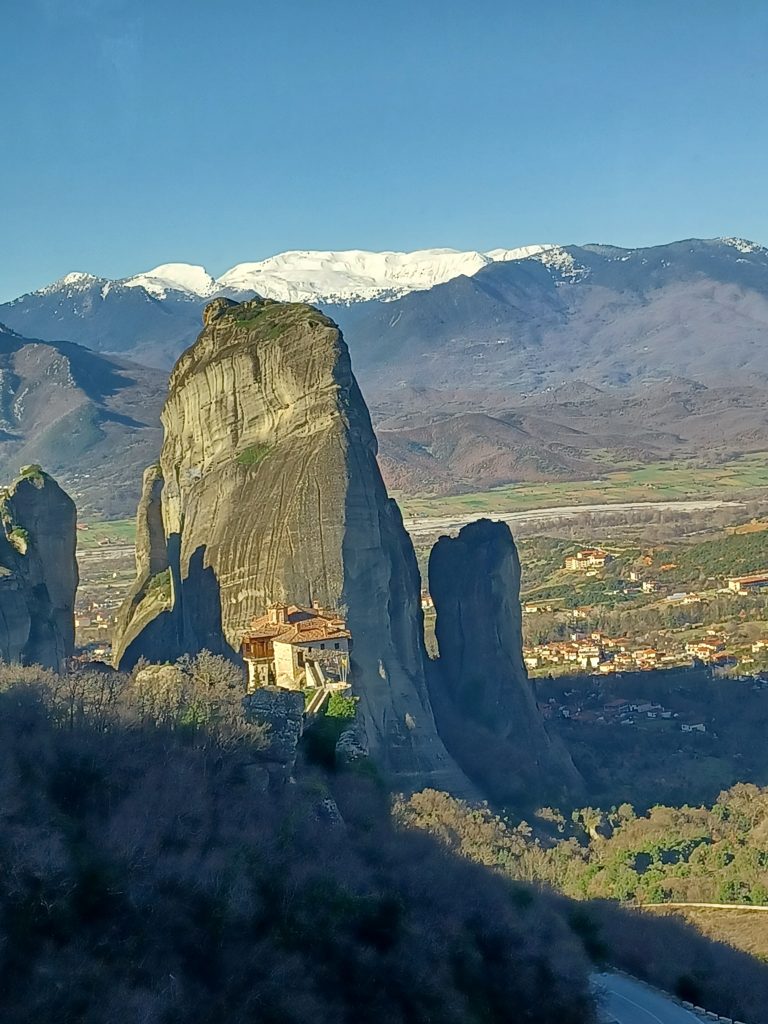
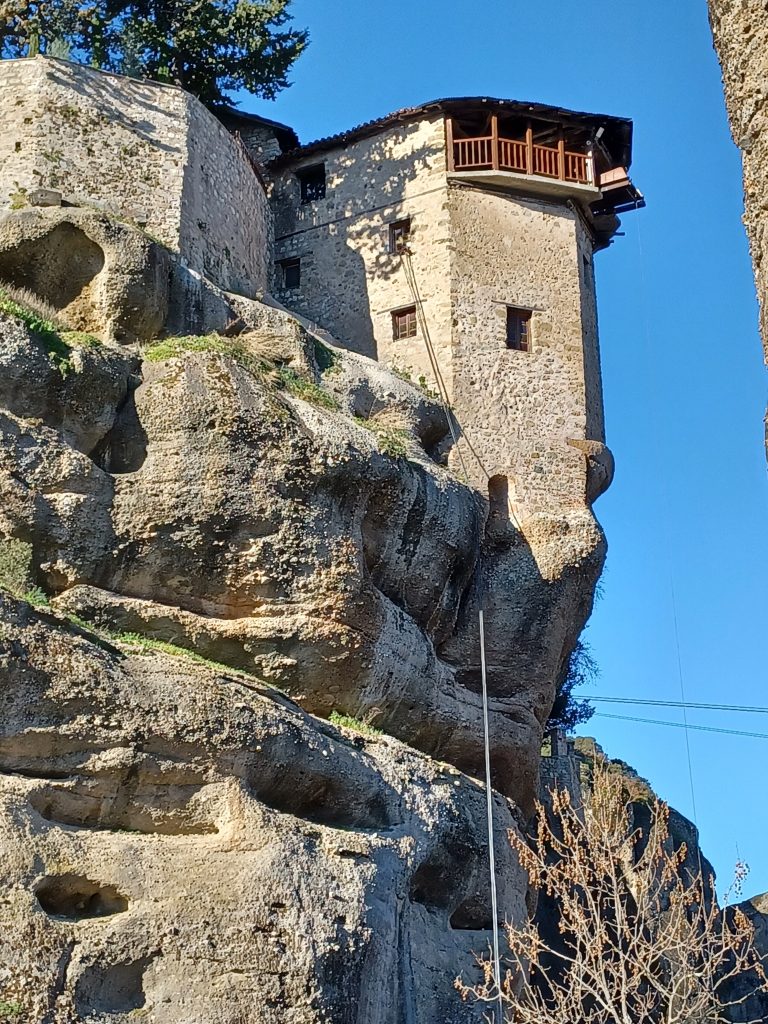
We female members of the group had been warned prior to the tour to bring skirts to cover ourselves when visiting the monasteries. Thus, I had brought one with me, long with blue and white horizontal stripes, but the others didn’t. They are provided with wrap around skirts in red or blue colours. We look quite ridiculous with these skimpy things over our trousers and boots, with our bulky jackets on top. We are also still having to wear masks, due to Covid-19 still lingering. Thus kitted out, we are able to go into the rooms and chapels and admire the ancient frescos and icons and other treasures. A small price to pay for seeing such spiritual places.
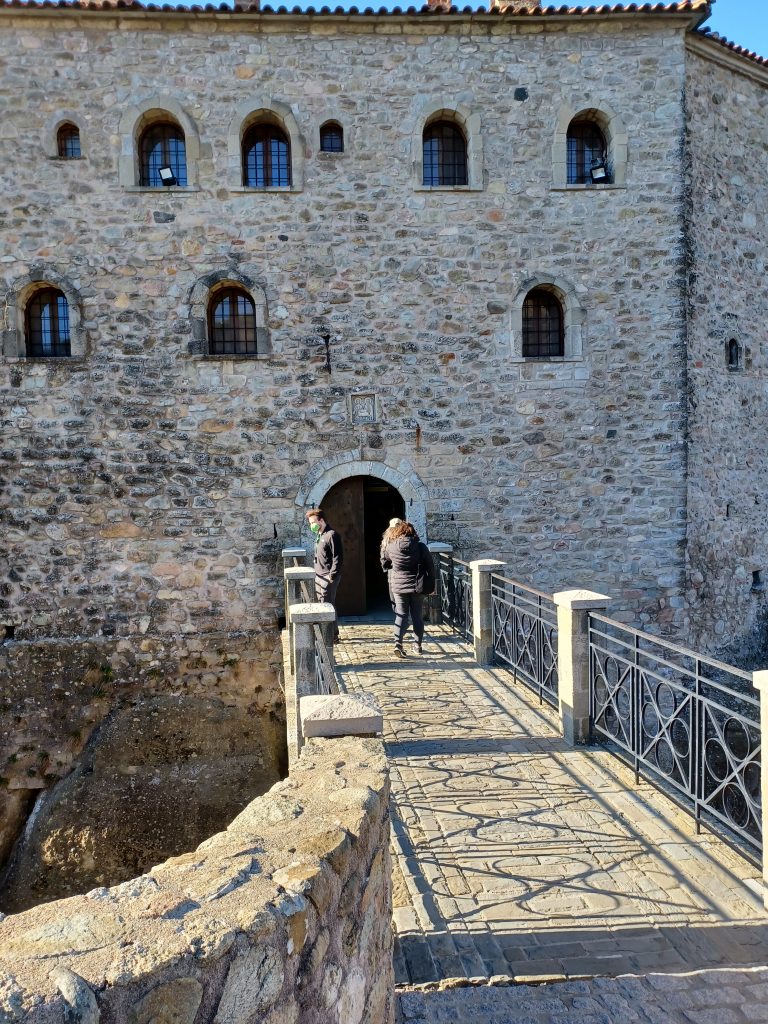
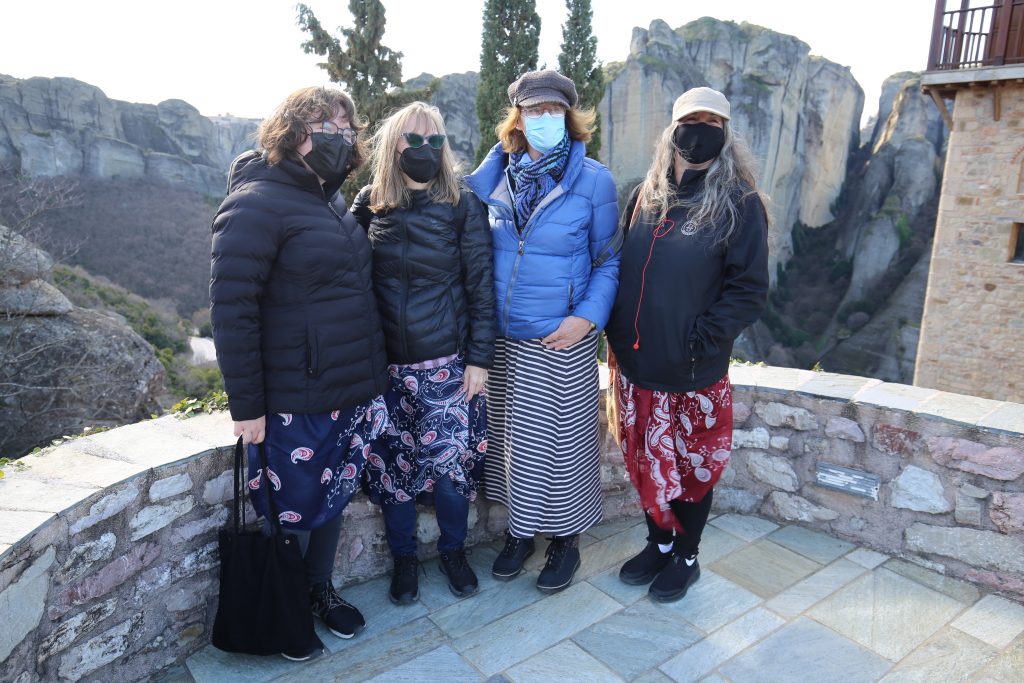
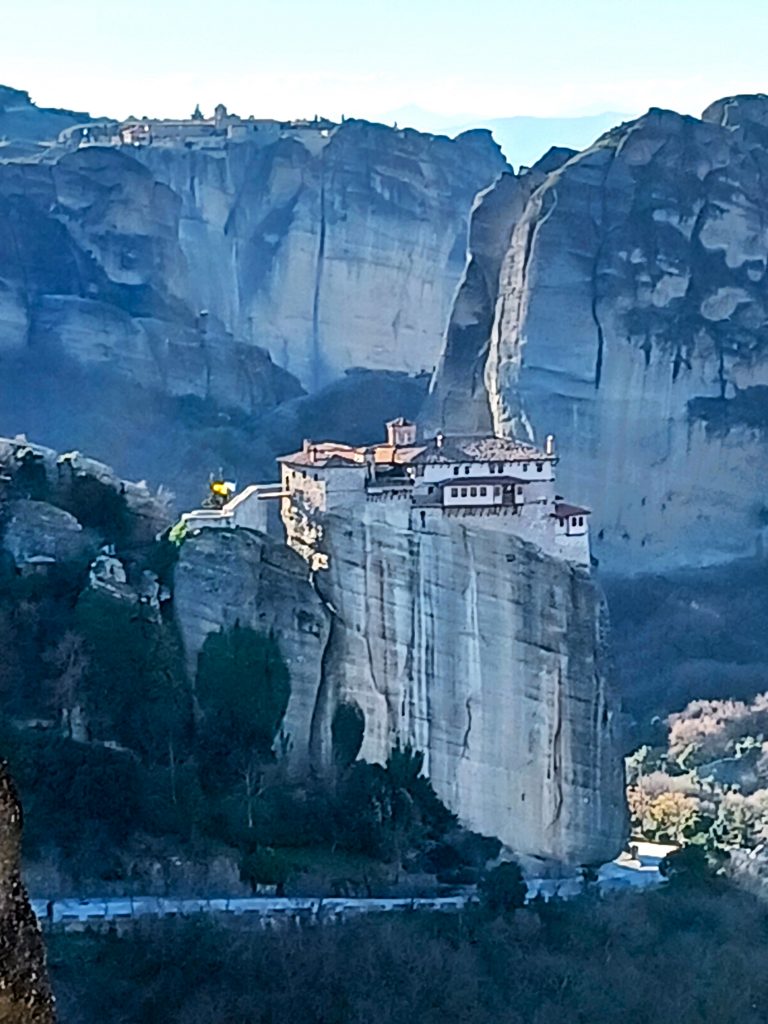
Before heading back to Athens, we are taken to see a workshop where copies of Byzantine icons are made and are given a demonstration of how the wooden blocks are covered with gold leaf. Icons are sacred images mostly of saints, Christ and the Virgin, which were venerated in the Byzantine Christian church from about the third century AD. They are believed to offer protection.
I purchase an icon featuring St Christopher, the patron saint of travellers. Legend has it that, after conversion to Christianity, the saint devoted his life to ferrying travellers across a dangerous river. He was asked by a child to take him across, but as he did so the child became heavier and heavier. On reaching the other side, he was told that he had borne the weight of the world on his back and Him who created it. The St Christopher icon therefore, is said to bless travellers and ensure their safe passage. This seems appropriate and augurs well for future travels.
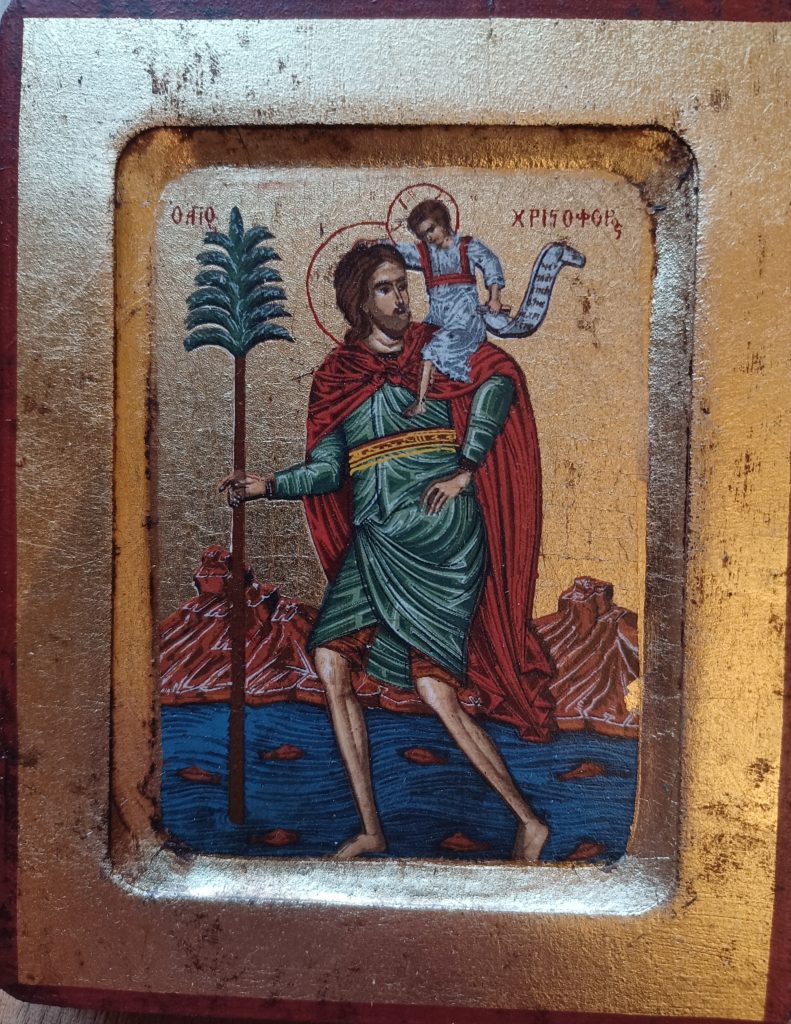

Leave a Reply